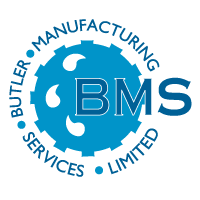Sewage Parameters 4 Part 2: Phosphorus (P)
Hey again,
Last time we discussed Phosphorus (P) in its different forms and why it is important as regards package wastewater treatment. It is frequently being specified as an effluent parameter at levels from 0.5 – 5 mg/l.The easiest way to decrease P in sewage effluent is to investigate if a specific cause of high P levels can be identified. For example, in a hotel that still washes its own laundry, switching to a low P detergent can markedly reduce P levels in the influent and thus effluent.Some reduction of P will naturally occur in the Primary settlement area of a package sewage treatment plant such as the Blivet. Some P is adsorbed onto Suspended Solids (SS) and thus settling out SS will lead to a small reduction in P in the effluent.Phosphorus can be reduced by both biological processes such as the Bardenpho process or during denitrification. However, the most usual method used in package sewage treatment is by dosing the system with Aluminium/Ferric Sulphate (FeSO4) FeSO4 reacts with P in sewage and forms a flocculent, which settles out into the sewage sludge. The level of reduction of P, all things being equal, is a function of the amount of FeSO4 introduced in the sewage treatment system. FeSO4 lends itself to package sewage treatment in that package plants such as the Blivet, can have a small dosing pipe fitted directly into the primary settlement area, thus allowing relatively easy and safe dosing.FeSO4 is unfortunately a hazardous chemical and thus adequate health and safety precautions need to be taken when servicing or operating a system. FeSO4 is usually supplied in an IBC in a bunded area. Any eye wash station is often specified to be in the environs of FeSO4 in case of eye splashes. As FeSO4 is a hazardous and corrosive chemical overdosing of a biological system, such as the BMS Aerotor, can result in bacterial death and impaired performance of the system. There can be a considerable lag period between the system completely recovering and FeSO4 overdosing being detected and stopped. The other main drawback of dosing with FeSO4 is that it increases sludge bulk by 20-25%. This means that the periods between desludging can be considerably reduced if adequate allowance is not made.A sample Ferric Sulphate dosing calculation for Phosphorus reduction can be see below; Next up for discussion is Ammonia (NH4).If you have any questions of would like information on package wastewater treatment products, please do not hesitate to contact me.
Next up for discussion is Ammonia (NH4).If you have any questions of would like information on package wastewater treatment products, please do not hesitate to contact me.
A bit about the company:
Butler Manufacturing Services is a family owned specialist manufacturer of package (all in one) products for sewage treatment and surface water treatment established in 1986 with exports to 38+ countries worldwide including the world leading Blivet package sewage treatment plant, a ‘one stop shop’ for all surface water products from design to installation including attenuation, interceptors, holding tanks (incl. chemical resistant), hydrobrakes, rainwater harvesting tanks/filters & vortex silt separators, chlorine contact tanks, fully fitted pumps and sumps and much more.If there is a requirement for any of above on any project that you are working on we would welcome the opportunity to work on a solution with you.© Butler Manufacturing Services 2013.

